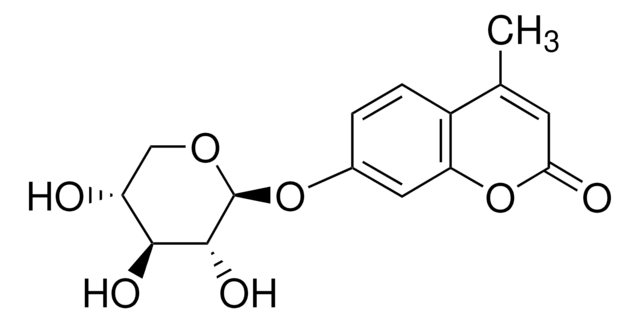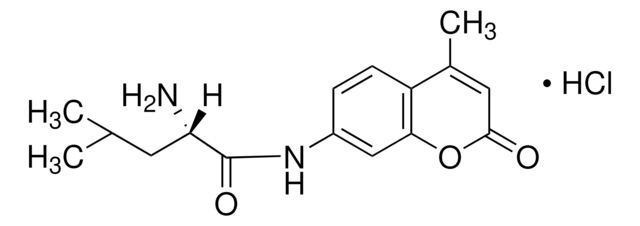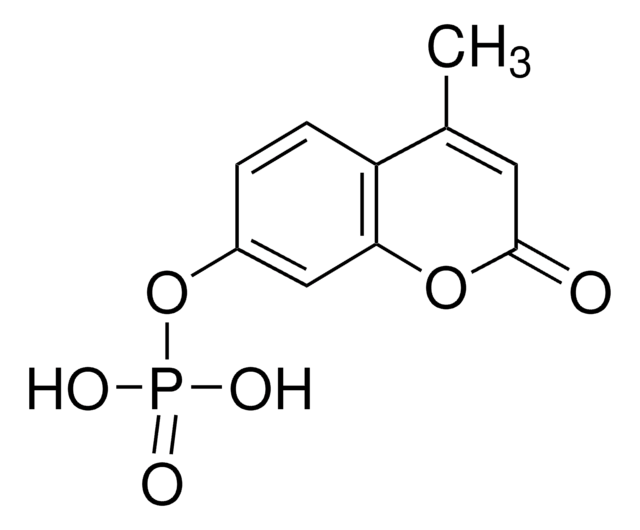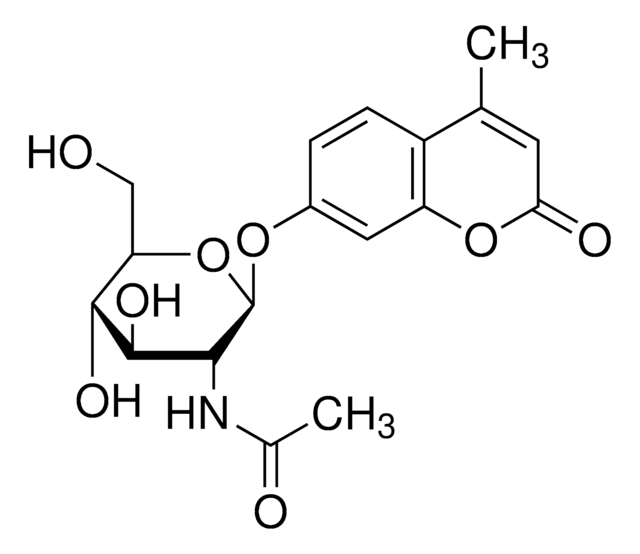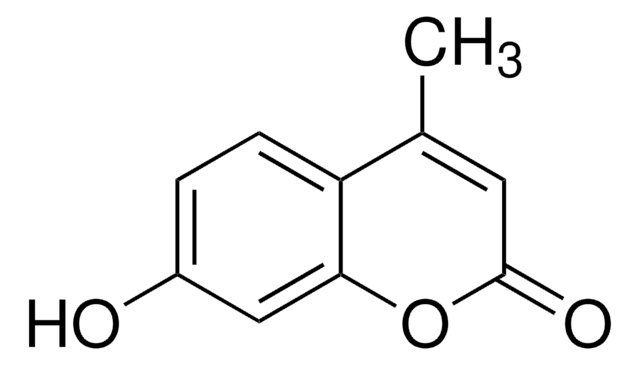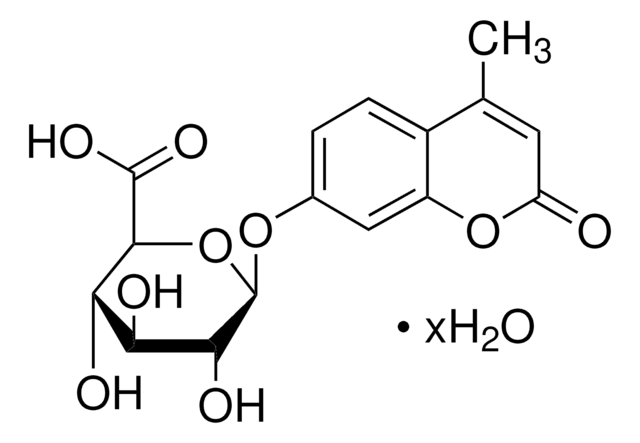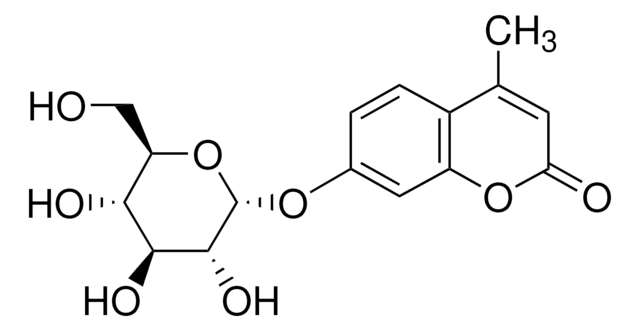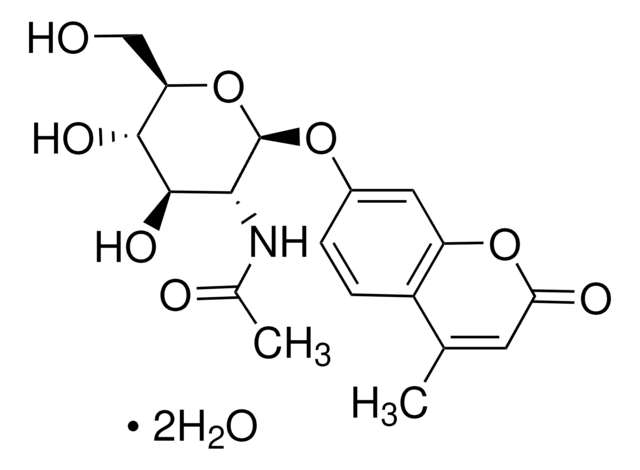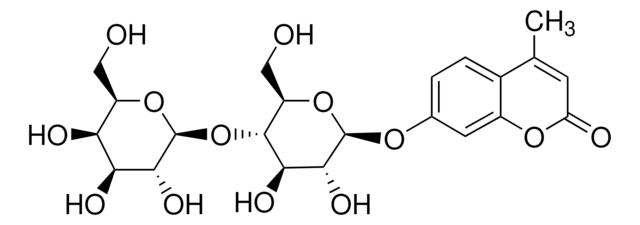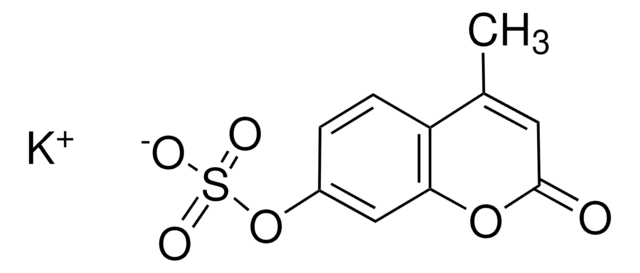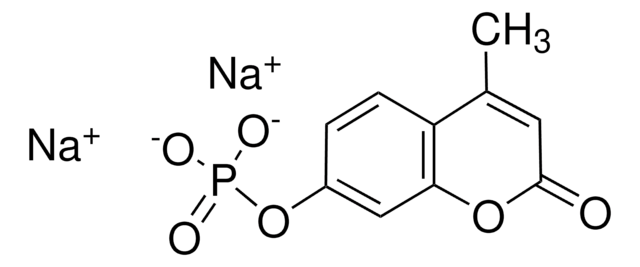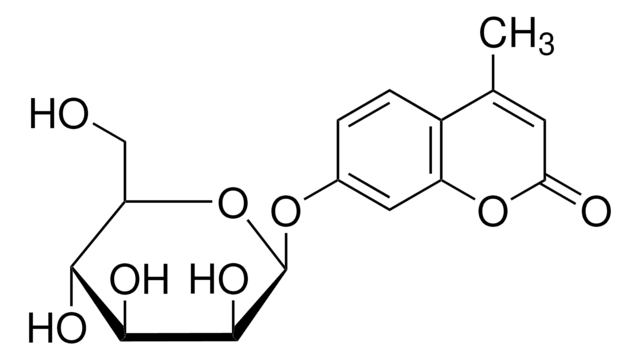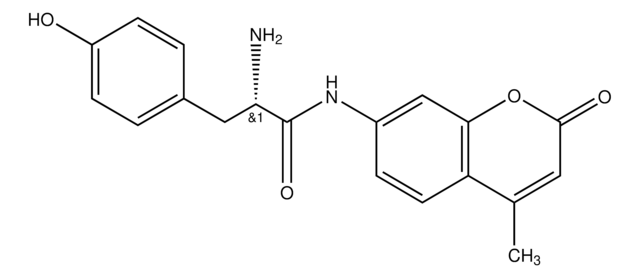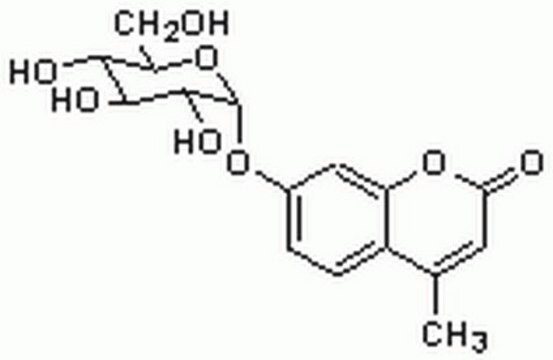M6018
4-Methylumbelliferyl β-D-cellobioside
glucanase substrate, fluorogenic, ≥98.00% (TLC), powder
Sinonimo/i:
4-Methylumbelliferyl beta-D-cellobioside
About This Item
Prodotti consigliati
product name
4-Methylumbelliferyl β-D-cellobioside, glucanase substrate
Livello qualitativo
Saggio
≥98.00% (TLC)
Forma fisica
powder
Solubilità
water: 19.60-20.40 mg/mL, clear, colorless to faintly yellow
Temperatura di conservazione
2-8°C
Stringa SMILE
CC1=CC(=O)Oc2cc(O[C@@H]3O[C@H](CO)[C@@H](O[C@@H]4O[C@H](CO)[C@@H](O)[C@H](O)[C@H]4O)[C@H](O)[C@H]3O)ccc12
InChI
1S/C22H28O13/c1-8-4-14(25)32-11-5-9(2-3-10(8)11)31-21-19(30)17(28)20(13(7-24)34-21)35-22-18(29)16(27)15(26)12(6-23)33-22/h2-5,12-13,15-24,26-30H,6-7H2,1H3/t12-,13-,15-,16+,17-,18-,19-,20-,21-,22+/m1/s1
PRTGXBPFDYMIJH-MKQZUAMYSA-N
Applicazioni
- to assay cellulase from A. niger
- to determine the extracellular enzyme activity for 1,4-β-cellobiohydrolase
- to assay the activity of bound enzyme, endoglucanase I (EGIc) Trichoderma reesei class II hydrophobins (HFBI)
Azioni biochim/fisiol
Codice della classe di stoccaggio
11 - Combustible Solids
Classe di pericolosità dell'acqua (WGK)
WGK 3
Punto d’infiammabilità (°F)
Not applicable
Punto d’infiammabilità (°C)
Not applicable
Dispositivi di protezione individuale
Eyeshields, Gloves, type N95 (US)
Certificati d'analisi (COA)
Cerca il Certificati d'analisi (COA) digitando il numero di lotto/batch corrispondente. I numeri di lotto o di batch sono stampati sull'etichetta dei prodotti dopo la parola ‘Lotto’ o ‘Batch’.
Possiedi già questo prodotto?
I documenti relativi ai prodotti acquistati recentemente sono disponibili nell’Archivio dei documenti.
I clienti hanno visto anche
Il team dei nostri ricercatori vanta grande esperienza in tutte le aree della ricerca quali Life Science, scienza dei materiali, sintesi chimica, cromatografia, discipline analitiche, ecc..
Contatta l'Assistenza Tecnica.
